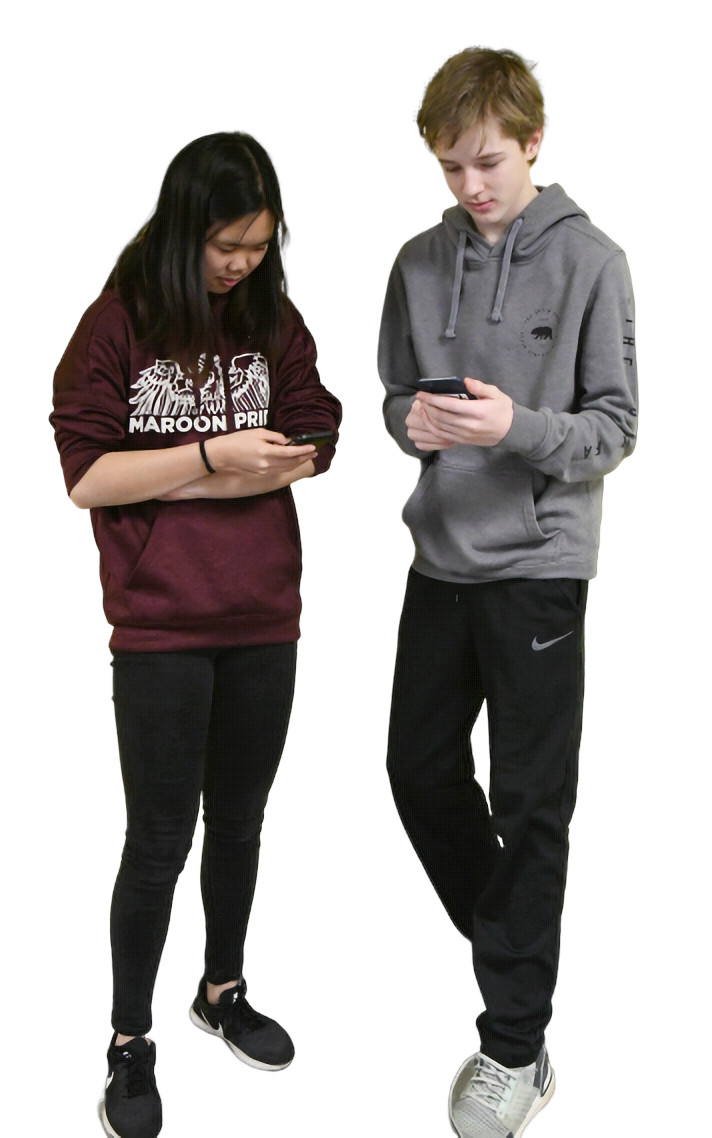Fact or fiction: Popular phone myths affect classroom policy
January 24, 2020
More than four of five teens in the United States own a smartphone, according to a 2019 report released by Common Sense Media. Smartphones provide access to essentially unlimited amounts of information, but they can also distract students from school work. Senior Vivi Corré said she sees students using their phones in class but does not respond.
“I often feel like at this point it’s just become so widespread that it’s hard to say it to everyone,” Vivi said.
In monitoring phone usage in class, teachers vary in their policies. Spanish teacher Suzanne Baum requires students in her classes to leave their phones on a rack at the beginning of the class, while other teachers including science teacher Sharon Housinger prohibit them from being out and let students regulate themselves.
Brian Hewlett, Lab’s director of innovation and technology, said, “It’s up to the instructor to know the students in the class and what they think will best allow them to learn.”
Outside of schoolwork, there are a variety of facts and fictions associated with these devices.
MYTH: Using phones in class can be detrimental to learning.
TRUE: A study published in Educational Psychology found that students in classrooms that permitted non-academic use of devices such as smartphones performed worse on exams and retained less information over time than students in classrooms not permitting such device use. The policy had a classroom-wide effect and even impacted students who did not actually use a device.
Ms. Housinger said smartphones can be psychologically rewarding and activate pleasure pathways in the brain that distract students and reduce their ability to concentrate.
MYTH: Phones are only a distraction when students actively use them.
 FALSE: The distracting potential of smartphones is not limited to when users are actively engaged with them.
FALSE: The distracting potential of smartphones is not limited to when users are actively engaged with them.
Science teacher Daniel Calleri said part of the brain is engaged with the smartphone whenever it is out.
Indeed, the presence of a smartphone can cause “brain drain,” reduced cognitive capacity, according to a study published in the Journal of Association for Consumer Research.
MYTH: Blue light from phone screens can affect sleep.
TRUE: According to the National Sleep Foundation, blue light can affect sleep by delaying melatonin release, increasing alertness, and altering the body’s biological clock. The result is less sleep or lower quality sleep with less REM. One solution is to shift to red and yellow lights that do not damage sleep.
“Your brain has evolved to know that more blue light means noon and more orange light means sunset,” Ms. Housinger said.
MYTH: Phones can benefit learning at school.
TRUE: Despite their ability to distract users, smartphones can contribute to learning when facilitating activities such as Kahoot! or Quizlet Live.
However, Spanish teacher Suzanne Baum, who sometimes uses these programs in her classes, said they have little pedagogical value.
Smartphones also allow students to play music while working.
“It helps me tune out all other distractions around me. When it’s silent, I feel like I get a lot more easily distracted,” sophomore Tyler Nava said.